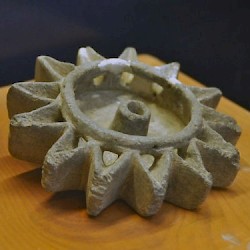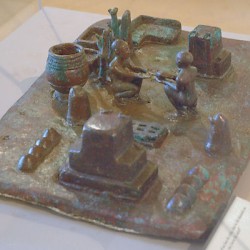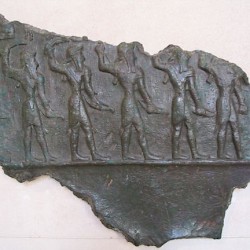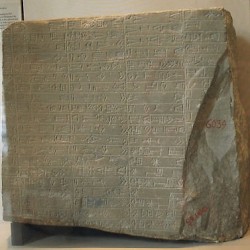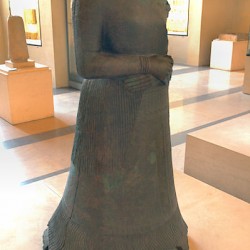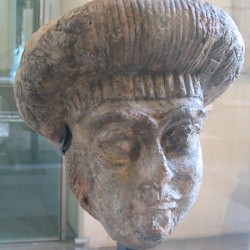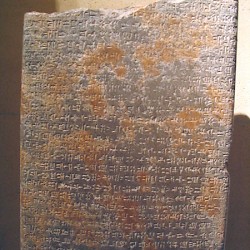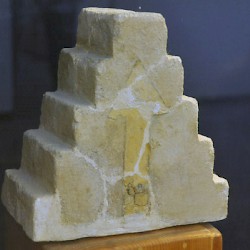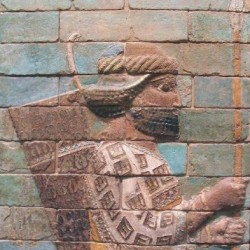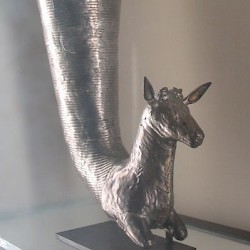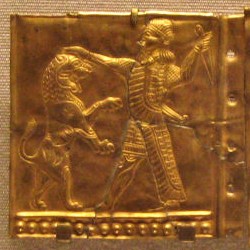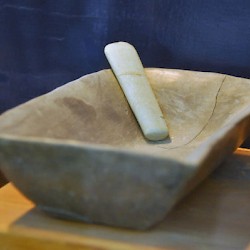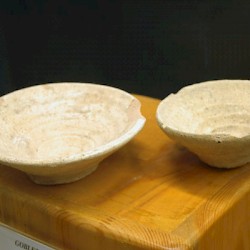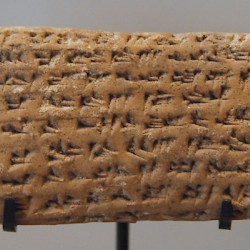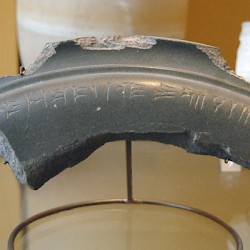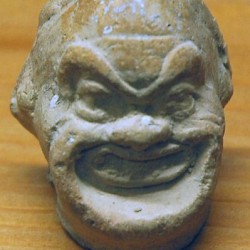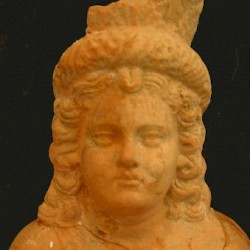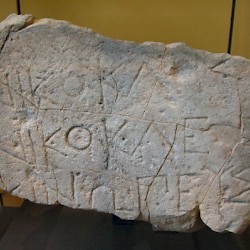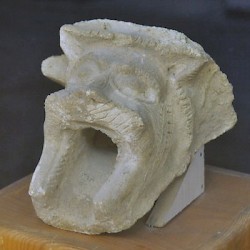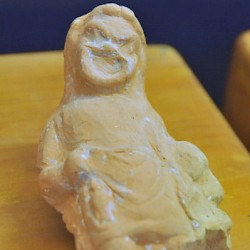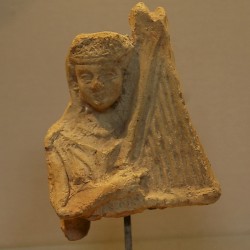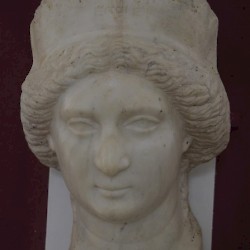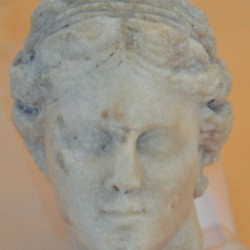Susa, Museum Pieces
Susa (Elamitic, Babylonian: Šušim; Greek τὰ Σοῦσα): capital of Elam, favorite residence of the Persian king Darius I the Great.
Museum Objects from Susa
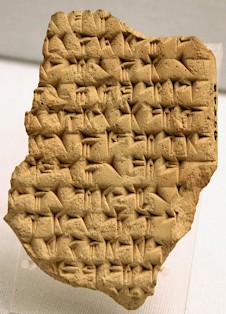
Many objects from Susa have found their way to museums in Iran and Europe. The site itself has a nice little museum; many other objects can be found in the Louvre in Paris, because the first excavators were from France. It comes as no surprise to find other objects in the National Museum in Tehran. The British Museum in London owes a part of its collection to the British exploitation of the oil fields of Khuzestan.
The first photo shows a beautifully written clay tablet with the text by Darius I the Great that is known as DSe: a list of satrapies of the Achaemenid Empire. The full text and translation of this document can be found here.
Below are some other objects from the museums already mentioned, arranged more or less chronologically with the oldest objects first.
Third Millennium BCE
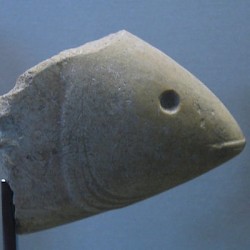 Susa, Stone fish |
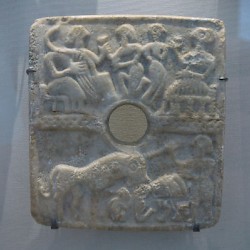 Susa, Stone relief with a banquet scene |
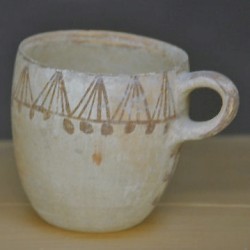 Susa, Goblet |
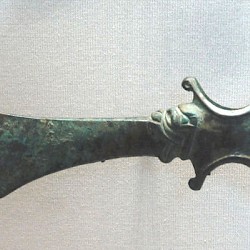 Susa, Battle axe |
Second Millennium BCE
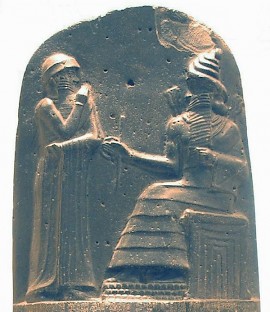
The best-known archaeological find from Susa is without any doubt the diorite stela with the Laws of the Babylonian king Hammurabi (r.1792-1750), which was taken away when the Elamites looted Babylon. The capital of the stela shows how Hammurabi prays to Šamaš, the sun god. The laws are written underneath this picture.
The significance of the regulations it is still unclear. In a society that was overwhelmingly illiterate, people would never know their rights if they depended upon a written text, and it is possible that the stela was in fact only meant to show to the eternal gods that the king was a just man, or tried to be.
Early First Millennium BCE
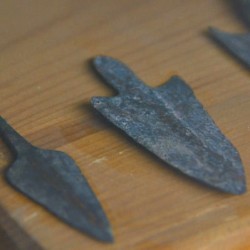 Susa, Neo-Elamite arrowheads |
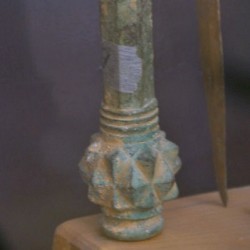 Susa, Neo-Elamite mace |
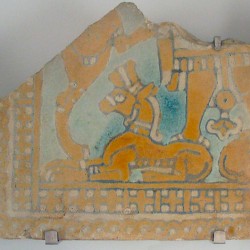 Susa, Neo-Elamite decoration (dragon) |
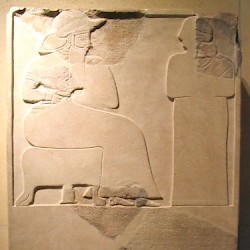 Susa, Stela of Adda-hamiti-Inšušinak |
Achaemenid Age
Hellenistic Objects
Parthian and Sasanian Objects
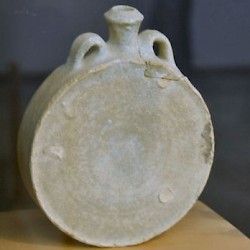 Susa, Parthian bottle |
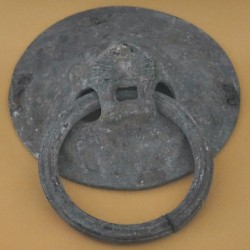 Susa, Handle of a Parthian coffin |
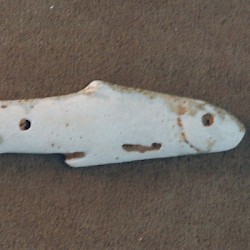 Susa, Stone fish |
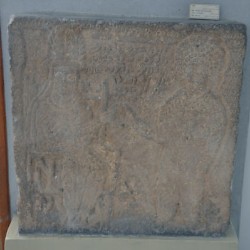 Susa, Relief of Artabanus IV |
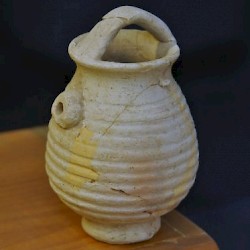 Susa, Parthian jar |
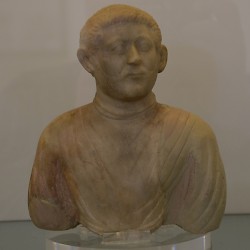 Susa, Sassanian portrait |
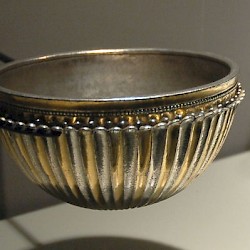 Susa, Sasanian cup |
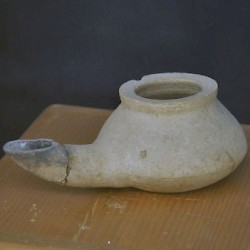 Susa, Oil lamp |
